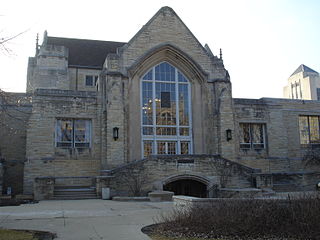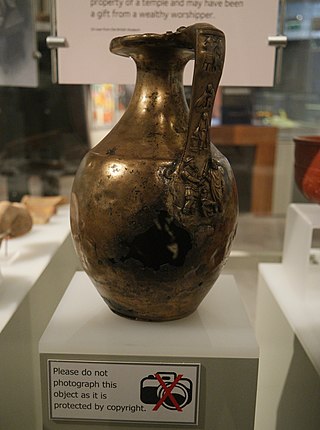A copyright is a type of intellectual property that gives its owner the exclusive right to copy, distribute, adapt, display, and perform a creative work, usually for a limited time. The creative work may be in a literary, artistic, educational, or musical form. Copyright is intended to protect the original expression of an idea in the form of a creative work, but not the idea itself. A copyright is subject to limitations based on public interest considerations, such as the fair use doctrine in the United States.

Intellectual property (IP) is a category of property that includes intangible creations of the human intellect. There are many types of intellectual property, and some countries recognize more than others. The best-known types are patents, copyrights, trademarks, and trade secrets. The modern concept of intellectual property developed in England in the 17th and 18th centuries. The term "intellectual property" began to be used in the 19th century, though it was not until the late 20th century that intellectual property became commonplace in most of the world's legal systems.

Criticism of copyright, or anti-copyright sentiment, is a dissenting view of the current state of copyright law or copyright as a concept. Critics often discuss philosophical, economical, or social rationales of such laws and the laws' implementations, the benefits of which they claim do not justify the policy's costs to society. They advocate for changing the current system, though different groups have different ideas of what that change should be. Some call for remission of the policies to a previous state—copyright once covered few categories of things and had shorter term limits—or they may seek to expand concepts like fair use that allow permissionless copying. Others seek the abolition of copyright itself.
The history of copyright starts with early privileges and monopolies granted to printers of books. The British Statute of Anne 1710, full title "An Act for the Encouragement of Learning, by vesting the Copies of Printed Books in the Authors or purchasers of such Copies, during the Times therein mentioned", was the first copyright statute. Initially copyright law only applied to the copying of books. Over time other uses such as translations and derivative works were made subject to copyright and copyright now covers a wide range of works, including maps, performances, paintings, photographs, sound recordings, motion pictures and computer programs.

The copyright law of Canada governs the legally enforceable rights to creative and artistic works under the laws of Canada. Canada passed its first colonial copyright statute in 1832 but was subject to imperial copyright law established by Britain until 1921. Current copyright law was established by the Copyright Act of Canada which was first passed in 1921 and substantially amended in 1988, 1997, and 2012. All powers to legislate copyright law are in the jurisdiction of the Parliament of Canada by virtue of section 91(23) of the Constitution Act, 1867.
Perpetual copyright, also known as indefinite copyright, is copyright that lasts indefinitely. Perpetual copyright arises either when a copyright has no finite term from outset, or when a copyright's original finite term is perpetually extended. The first of these two scenarios is highly uncommon, as the current laws of all countries with copyright statutes set a standard limit on the duration, based either on the date of creation/publication, or on the date of the creator's death. Exceptions have sometimes been made, however, for unpublished works. Usually, special legislation is required, granting a perpetual copyright to a specific work.
Golan v. Holder, 565 U.S. 302 (2012), was a Supreme Court case that dealt with copyright and the public domain. It held that the "limited time" language of the United States Constitution's Copyright Clause does not preclude the extension of copyright protections to works previously in the public domain.
The Plant Patent Act of 1930 is a United States federal law spurred by the work of Luther Burbank and the nursery industry. This piece of legislation made it possible to patent new varieties of plants, excluding sexual and tuber-propagated plants. Plant patents, such as PP12 'PLUM', were issued to Burbank posthumously. In supporting the legislation, Thomas Edison testified before Congress in support of the legislation and said,
The Adelphi Charter on Creativity, Innovation and Intellectual Property is the result of a project commissioned by the Royal Society for the encouragement of Arts, Manufactures & Commerce, London, England, and is intended as a positive statement of what good intellectual property policy is. The Charter was issued in 2004.
Traditional knowledge (TK), indigenous knowledge (IK) and local knowledge generally refer to knowledge systems embedded in the cultural traditions of regional, indigenous, or local communities. According to the World Intellectual Property Organization (WIPO) and the United Nations (UN), traditional knowledge and traditional cultural expressions (TCE) are both types of indigenous knowledge.
The DePaul University College of Law is the professional graduate law school of DePaul University in Chicago. The College of Law’s facilities encompass nine floors across two buildings, with features such as the Vincent G. Rinn Law Library and Leonard M. Ring Courtroom. The law school is located within two blocks of state and federal courts, as well as numerous law firms, corporations and government agencies.

Northern Illinois University College of Law is one of four public law schools in the U.S. state of Illinois. It is one of two public law schools in the Chicago area. The College of Law was founded as the Lewis University College of Law in Glen Ellyn, Illinois in 1975. It became part of Northern Illinois University in August 1979, and in 1982 moved to the DeKalb, Illinois campus, taking up residence in Swen Parson Hall, the former NIU main library. The College of Law offers the Juris Doctor degree.

A copyfraud is a false copyright claim by an individual or institution with respect to content that is in the public domain. Such claims are unlawful, at least under US and Australian copyright law, because material that is not copyrighted is free for all to use, modify and reproduce. Copyfraud also includes overreaching claims by publishers, museums and others, as where a legitimate copyright owner knowingly, or with constructive knowledge, claims rights beyond what the law allows.

The Sonny Bono Copyright Term Extension Act – also known as the Copyright Term Extension Act, Sonny Bono Act, or (derisively) the Mickey Mouse Protection Act – extended copyright terms in the United States in 1998. It is one of several acts extending the terms of copyright.

The public domain (PD) consists of all the creative work to which no exclusive intellectual property rights apply. Those rights may have expired, been forfeited, expressly waived, or may be inapplicable. Because no one holds the exclusive rights, anyone can legally use or reference those works without permission.
The copyright term is the length of time copyright subsists in a work before it passes into the public domain. In most of the world, this length of time is the life of the author plus either 50 or 70 years.

Paul Goldstein is a law professor at Stanford Law School.

Edward J. Damich is an American lawyer serving as a senior judge of the United States Court of Federal Claims. He served as the court's chief judge from 2002 to 2009.

The Copyright Remedy Clarification Act (CRCA) is a United States copyright law that attempted to abrogate sovereign immunity of states for copyright infringement. The CRCA amended 17 USC 511(a):
In general. Any State, any instrumentality of a State, and any officer or employee of a State or instrumentality of a State acting in his or her official capacity, shall not be immune, under the Eleventh Amendment of the Constitution of the United States or under any other doctrine of sovereign immunity, from suit in Federal Court by any person, including any governmental or nongovernmental entity, for a violation of any of the exclusive rights of a copyright owner provided by sections 106 through 122, for importing copies of phonorecords in violation of section 602, or for any other violation under this title.
Dennis S. Karjala was an American intellectual property law professor at Arizona State University. His major interests in teaching and research were primarily in the area of intellectual property, specifically in copyright and its applications in digital technologies. His work in the field of intellectual property was internationally recognized and complemented by his ease in speaking and writing in Japanese.










